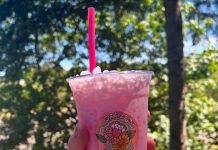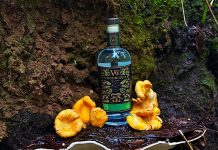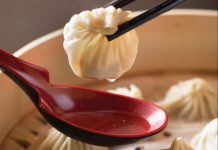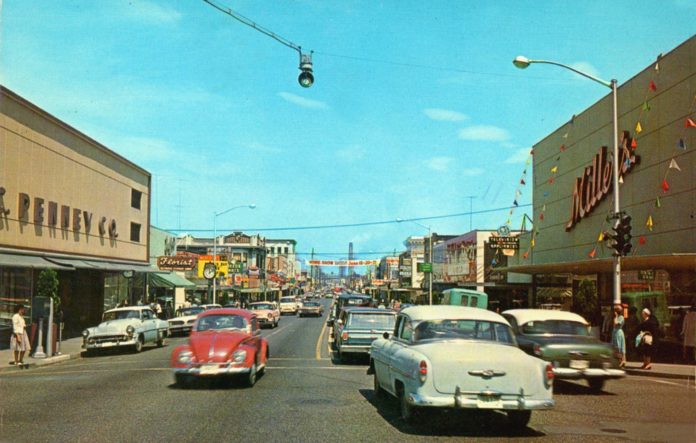
It’s a summer, Friday evening in the mid-1960s. You are about to call it a day in your office in downtown Olympia but not really ready to head home. So, maybe you decide to join some of your friends in the office for a drink.
Let’s journey on a historic pub crawl through Olympia circa the mid-‘60s.
The first thing you notice is that Charlie’s, today a modern sports bar called Charlie’s Bar and Grill, is still Charlie’s, but named Charlie’s Burgers. Probably one of the oldest watering holes in Olympia, it was founded by Charles Goldberg in 1931 but was mostly known as an inexpensive burger place until recent decades.
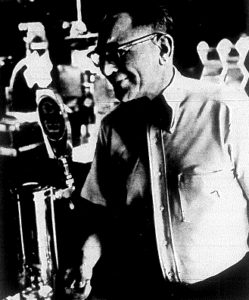
Your first drink stop is the Eastside Club Tavern. It has been years since the historic bar was nearly leveled by an out-of-control train that destroyed the train station located across the street in 1959. But, regulars at the Eastside still talk about it as if they were all there on that day.
The first thing you hear walking through the bar is a soft, “Hey, how are ya?” as the Eastside’s owner, Babe Haumann, greets you. He sits, nursing a cup of black coffee, even in the late afternoon.
Haumann’s wife runs the flower shop next door, and she might stop in to see about business after she closes up shop. Babe himself will not get to bed until about three in the morning.
You and your friends enjoy a game of pool in the back of the bar and decide that you are not finished yet. You want to head down to another bar but cannot quite decide. So, after you finish your beer and game of pool, you start walking west, hoping for inspiration.
Your friends pass on McCoy’s and the Spar, also giving up on the idea of Roy’s place (located next door to the radio station offices on Washington Street). Instead, you end up taking a right into a narrow tavern on Capitol Way.
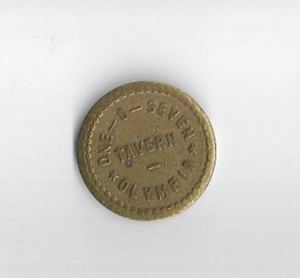
The One-O-Seven Tavern is tucked into a small space currently occupied by Browsers Books. A long counter runs deep into the bar. You take a stool with your friends and order a drink. One of your friends stops you as you reach to pay for your beer and says that the drink’s on him.
He has apparently been collecting tokens from this particular tavern and keeps forgetting to bring them in until tonight. Like many taverns of the era, the One-O-Seven used pub tokens, which granted the holder a free drink. One way someone might get a token would be to already have a drink when someone else in the bar orders a round. Rather than force another drink on the holder, the bartender would just give him a token to redeem for a drink later. The round-buyer would be charged for how many tokens and drinks were distributed.
Sometimes, people would forget they had a token, which meant the bar could pocket a bit more profit.
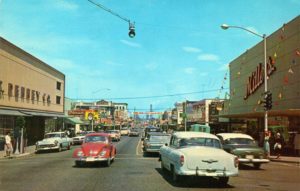
Your friends finally decide on one last stop before the end of the night. Rather than heading to the Brotherhood, Curley’s (where the Great Cuisine of India is now) or the M&M (next door to Saigon Rendezvous), you suggest you call a cab from Red Top. You don’t even need to borrow the bar’s phone to call the cab. The cab company is located around the corner, right across the street from Curley’s (the current location of the New Moon Cafe).
Next, you tell the cab driver to head south into Tumwater so you can try out the newest watering hole in town, the Tom-Tom Room at the Tyee Motor Inn.
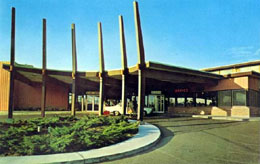
The Olympian, a restaurant and bar across from Sylvester Park, had been the most important gathering place in the capitol city for decades. But, the Tyee has been quickly eclipsing it in recent years. Located on the same spot as the current Fred Meyer in Tumwater, the Tyee in the 1960s was a loud, less formal competitor to the buttoned up world of the Olympian.
Since it’s summer, you and your officemates finish off your night in more casual, relaxed Tom Tom Room and Tyee, one that is less power-driven than during the winter’s legislative session. Even though the loud music and mid-century modern design is a massive contrast to the older cinder block and brick walls you were surrounded by earlier in the night, this is the perfect place to end your 1960s pub crawl adventure.





